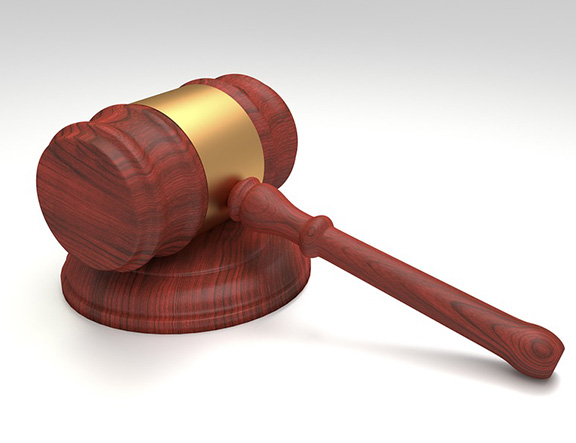Smartphone App Helps Coaches Evaluate Concussions
A new smartphone application should help coaches at all levels make informed decisions about whether a player has received a brain injury and needs to sit out. The app provides a way to evaluate signs and symptoms of a concussion, suggests an immediate course of action, stores data and even emails the evaluation to physicians, trainers, school officials, care givers or others.
“This is a tool that can help coaches make an informed decision about a player’s condition,” said Dr. Jason Mihalik, an assistant professor at the Matthew Gfeller Traumatic Brain Injury Research Center at the University of North Carolina who co-authored the application. “It does not diagnosis a concussion, but it helps evaluate a player.”
The app can help coaches and parents make decisions when a medical professional is not immediately available.
Bill Burniston, the certified athletic trainer at Middle Creek High, has not used the app, but he likes the concept.
“The three priorities for me as a certified athletic trainer are protecting the kids, protecting their academics and getting them back into playing,” Burniston said. “In the Wake County high schools, I have great confidence that the other trainers have the same priorities.
“What concerns me is what happens on the middle school, club and recreation level. Who is going to be there to evaluate those injuries? This application sounds like a great thing.”
Help for anyone
Concussions, which are traumatic brain injuries, can be difficult to assess. They are caused when the brain is shaken inside of the skull. The trauma causes a change in the way the brain works. Electrical and chemical processes are altered.
No imagery technology – no MRI, CAT scan or X-ray – can show a concussion, but medical professionals can diagnose a concussion by observing signs and symptoms.
The application will help coaches and parents recognize possible brain injuries and advise them to seek appropriate help. The app also provides guidance through the recovery process.
The app is available on iTunes for $3.99. The portion of proceeds that go to Mihalik and Dr. Gerard A. Gioia, who co-authored the app, go to the Matthew Gfeller Center at UNC Chapel Hill and to the Children’s National Medical Center in Washington, D.C., where Gioia is a clinician and researcher.
The coach and parent version of the Concussion Recognition and Response – another version is being developed for certified athletic trainers – can be used on devices such as iPhone, iPad, iPod Touch and Android devices and tablets.
The app is designed for high school, middle school, recreation and club coaches and parents.
“We have a lot of good information out there in a written form, but we wanted something that would pull it together and be very easy to use,” Gioia said. “With the paper version, you have to negotiate through the pages. With the app, we can deliver information and take in information.”
Mike Guerrero, the Garner High athletic trainer, said keeping the information in an easy to use format is appealing.
“Much of the time I end up making notes on a piece of gauze or something until I can get to my office,” he said.
Easy to use
The application is simple to use. Using a touch screen, the user answers questions about the blow that caused the suspected injury.
Next, the answers to 14 questions about the signs of a concussion – things like vomiting or balance issues – are evaluated along with the answers to 14 questions about symptoms – such as headache, nausea, memory loss.
The app evaluates the information and gives a suggested course of action.
A GPS system plots where the evaluation was done and emergency medical assistance can be summoned by pressing a button. An email function allows the information to be immediately forwarded to a school athletic trainer, coach, school nurse, parent, guidance counselor or other involved party.
The application also has a home monitoring function and a return-to-play guide. Parents or care givers can record the results of periodic evaluations as the player recovers.
In addition to having the answers to frequently asked questions, the app also stresses that recovery is more than becoming physically able to play sports.
“If a student has a badly sprained ankle, we would not put them on a treadmill and have them run while they are recovering,” Mihalik said. “We can see a swollen ankle and discoloration. We can’t see a brain injury, but the brain needs time to recover, too.”
Better understanding
Gioia said the easiest part of a player’s recovery may be athletically.
The harder aspect is returning to the classroom.
“How much should the student attempt in the classroom as the brain recovers?” Gioia said. “That is difficult.”
Middle Creek’s Burniston said a part of his job is notifying the guidance office at the school when a player has a brain injury.
Understanding concussions is important because the injury often is accompanied by changes that can affect classroom work.
Students may have light sensitivity, difficulty learning new concepts and lack the ability to focus. The teachers of a student with a concussion need to be told about the injury, Mihalik said.
“I remember years ago before we understood concussions as much as we do now, there sometimes would be a really good student whose grades and character would slip,” Burniston said. “People would say he got in with the wrong crowd, but looking back, I wonder if there had been a concussion.
“You really wonder if kids are injured away from school and they go untreated because parents or coaches didn’t recognize the signs and symptoms.
“This app could really help.”







